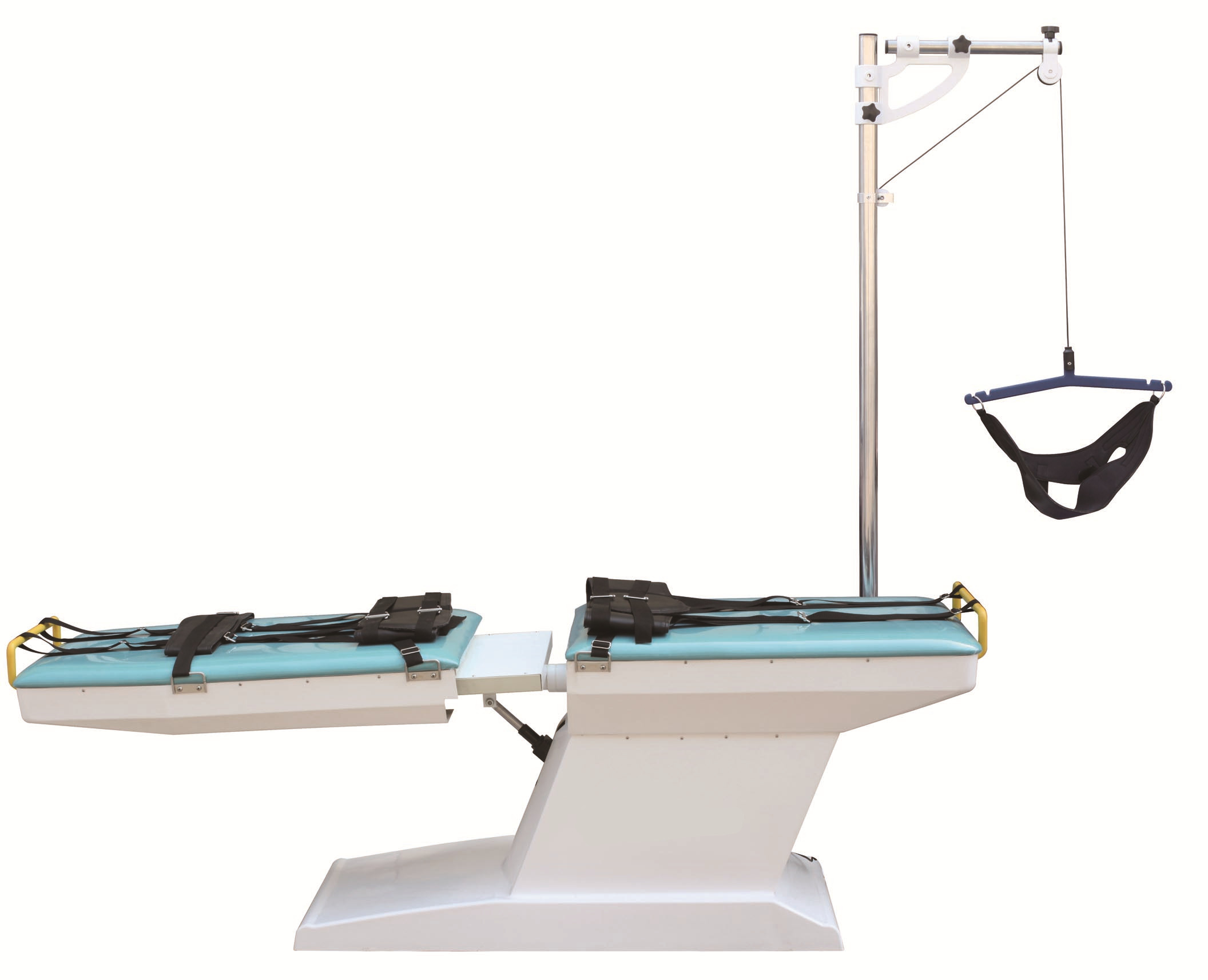How to do lumbar traction
How to do lumbar traction
Traction therapy is the application of external force on a part of the body or joint to apply pulling force, so that it occurs a certain separation, the surrounding soft tissue get appropriate drafting, so as to achieve the therapeutic purpose of a method.Spinal traction therapy usually refers to the use of external forces to pull the lumbar spine – pelvis for the purpose of treatment, which is called lumbar traction.
The general use of supine hip flexion position, can minimize the stress of the spine.Traction usually starts at half of one’s own body weight and gradually increases to the patient’s weight at most.Intermittent traction was the main treatment, each traction lasted 20-30min, traction 1-2 times a day, 15-20 days as a course of treatment.
According to the size and duration of traction, the traction can be divided into rapid traction and slow traction.Rapid traction has a large weight and short action time, and it is usually combined with the traditional Chinese medicine hand tip. This type of traction is most typical of the traditional Chinese medicine “artificial tension and pressure reset” method.Later, gradually developed into mechanical transmission of rapid horizontal traction.In recent years, researchers have combined the inclined plate and rotation technique of Traditional Chinese medicine with the rapid horizontal traction of mechanical transmission to create an angular rotating rapid traction bed, which has been applied to relieve the pain of numerous patients with lumbar disc herniation clinically.The weight of slow and rapid traction is small, and the time of traction varies from 30min to 1h each time. Multiple traction is needed, which is also a common surgical method for the treatment of lumbar disc herniation.
1. Improve the relationship between the protrusion and the nerve: For patients with mild or early lumbar disc herniation, traction therapy can gradually retract the intervertebral space and facilitate the return of the protrusion.For patients with a relatively long course of disease, the traction of ligaments and joint capsules that can bond and contract can widen the spinal canal space correspondingly, and the narrow intervertebral foramina on both sides can also be retracted at the same time, so as to relieve or eliminate the compression and stimulation of nerve roots and have a good effect on alleviating the numbness and pain of lower limbs.
Effect and brake lumbar fixation: traction, under the equilibrium state of action and reaction, the pull of the waist in a relatively fixed state of normal column line, the movement range and rate of the waist is bed rest and wear waist to further restrictions, in order to reduce or eliminate local hyperemia, exudation and edema, inflammatory reaction, etc.
Three, flabby lumbar back muscle: lumbar intervertebral disc protrusion is because of spinal nerve press or be stimulated, companion has lumbar back muscle spasm more, caused the aching symptom of lumbar not only so, and still can make up lumbar line is not straight.Traction therapy, can gradually make the back muscle relax, relieve muscle spasm.
4. Restore the normal alignment of the lumbar spine: During traction, if the patient’s lumbar spine is placed on a physiological curve, with the extension of traction time, the out-of-alignment phenomenon can be gradually restored to normal

Medical physiotherapy lumbar traction table traction bed
Physiotherapy Equipment
Walking Rehabilitation
Upper Limb Rehabilitation
Lower Limb Rehabilitation
Whole Body Rehabilitation
Children Rehabilitation
Finger Rehabilitation
CPM Series
Treatment Table Series
Lumbar and Neck Traction Bed
Medical Mask

